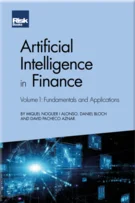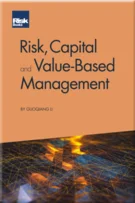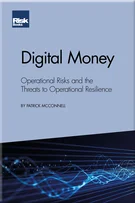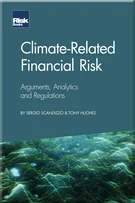Optimal Funding Tenors
Rene Reinbacher
Optimal Funding Tenors
Introduction
Bank Capital and Liquidity
ALM in the Context of Enterprise Risk Management
The New Basel Standards on IRRBB and Their Implications for ALM
Measuring and Managing Interest Rate and Basis Risk
The Modelling of Non-Maturity Deposits
Modelling Non-Maturing Deposits with Stochastic Interest Rates and Credit Spreads
Managing Interest Rate Risk for Non-Maturity Deposits
Replication of Non-Maturing Products in a Low Interest Rate Environment
Managing Mortgage Prepayment Risk on the Balance Sheet
Considerations for ALM in Low and Negative Interest Rate Environments
Credit Spreads
Hedge Accounting
Supervisory Views on Liquidity Regulation, Supervision and Management
Measuring and Managing Liquidity and Funding Risk
Managing Reserve Assets
Instruments for Secured Funding
Asset Encumbrance
Capital Management
A Global Perspective on Stress Testing
Reverse Stress Testing: Linking Risks, Earnings, Capital and Liquidity – A Process-Orientated Framework and Its Application to Asset–Liability Management
XVAs and the Holistic Management of Financial Resources
Optimal Funding Tenors
Funds Transfer Pricing in the New Normal
Balance-Sheet Management with Regulatory Constraints
Since the financial crisis of 2008, funding matters have received considerable attention from financial institutions. This concern can be easily understood by observing that spreads for unsecured long-term borrowing have dramatically increased,11This increase is reflected, for example, in the 5Y iTraxx for senior financials, which increased from 40 basis points (bp) prior to 2008 up to 360bp. even for the leading global financial firms, having a large impact on the accrual cost of their unsecured balance sheets.
Also, as banks painfully realised during the crisis of 2008, the infinite liquidity assumption – the ability to always raise money – does not hold for any financial institution, and the business model of lending long term (mortgages), borrowing short term (deposits) and earning the carry implies a considerable liquidity risk.
This chapter focuses on funding requirements for uncollateralised derivatives. For such trades, the main paradigm is that the mark-to-market (MTM)22The MTM is computed with respect to a specific reference rate. needs to be funded at all times, and all funds need to be raised using the firm’s unsecured funding rate (see the section starting on page
Copyright Infopro Digital Limited. All rights reserved.
As outlined in our terms and conditions, https://www.infopro-digital.com/terms-and-conditions/subscriptions/ (point 2.4), printing is limited to a single copy.
If you would like to purchase additional rights please email info@risk.net
Copyright Infopro Digital Limited. All rights reserved.
You may share this content using our article tools. As outlined in our terms and conditions, https://www.infopro-digital.com/terms-and-conditions/subscriptions/ (clause 2.4), an Authorised User may only make one copy of the materials for their own personal use. You must also comply with the restrictions in clause 2.5.
If you would like to purchase additional rights please email info@risk.net










